Ability Grid
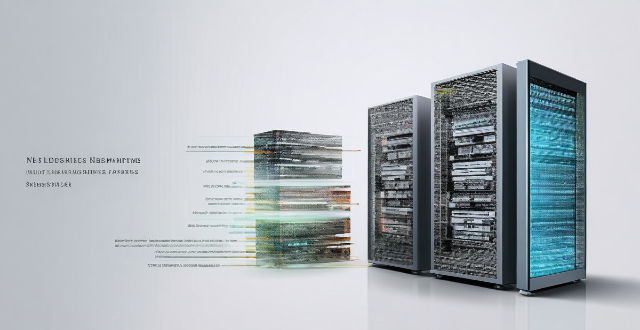
What is Smart Grid Technology ?
Smart grid technology is a modernized electrical grid infrastructure that utilizes advanced communication, control, and automation technologies to improve the efficiency, reliability, and sustainability of electricity delivery. It integrates renewable energy sources, storage devices, and intelligent monitoring systems to optimize the distribution and consumption of electricity. The key features of smart grid technology include intelligent monitoring, distributed energy resources, demand response management, electric vehicle integration, cybersecurity, and automation. The benefits of smart grid technology are improved reliability, increased efficiency, enhanced sustainability, consumer empowerment, and economic advantages.

What role does IoT play in Smart Grid Technology ?
The Internet of Things (IoT) plays a crucial role in the development and operation of smart grid technology. Smart grids are designed to improve the efficiency, reliability, and sustainability of electricity delivery systems. They achieve this by integrating advanced communication technologies, automated control systems, and innovative energy management strategies. IoT contributes to the functionality of smart grids in several ways: 1. **Enhancing Monitoring and Control**: IoT devices embedded in the grid collect data on energy consumption, grid status, and environmental conditions in real-time. This information is vital for optimizing grid performance and responding to demand fluctuations. With IoT, grid operators can remotely monitor and control grid components such as transformers, substations, and renewable energy sources, reducing the need for physical interventions and speeding up response times to grid issues. 2. **Improving Energy Efficiency**: IoT enables more precise demand response programs by allowing consumers to adjust their energy usage based on dynamic pricing signals or direct requests from the utility. By analyzing data from multiple sources, IoT systems can predict energy needs and allocate resources accordingly, reducing waste and increasing overall grid efficiency. 3. **Enabling Distributed Energy Resources (DERs)**: IoT facilitates the integration of distributed energy resources like solar panels and wind turbines into the grid. It ensures that these sources are managed efficiently to maximize their contribution to the grid. In areas with microgrids—smaller, localized grids that can operate independently—IoT allows for better coordination between the microgrid and the wider electrical network, ensuring smooth transitions and backup power during outages. 4. **Enhancing Grid Security**: IoT sensors can detect anomalies in equipment performance before they lead to failures, enabling preventive maintenance that reduces downtime and extends equipment lifespan. IoT devices also play a critical role in monitoring for cyber threats or physical tampering, helping to secure the grid against potential attacks or sabotage. 5. **Supporting Customer Engagement**: IoT-enabled smart meters provide detailed energy consumption data to consumers, encouraging them to adopt more energy-efficient behaviors and enabling them to participate in demand response programs. Utilities can offer personalized services based on customer preferences and usage patterns, fostering greater customer satisfaction and loyalty.

How does Smart Grid Technology work ?
Smart grid technology is a modernized electrical grid that uses digital communication technologies to optimize the delivery of electricity. It integrates advanced metering infrastructure, distributed energy resources, and communication networks to detect and react to changes in the power system. The key components of smart grid technology include advanced metering infrastructure (AMI), distributed energy resources (DERs), and communication networks. The benefits of smart grid technology include improved reliability, enhanced efficiency, increased resilience, better integration of renewable energy, and consumer empowerment. By optimizing the distribution of electricity based on demand patterns and available resources, smart grids reduce energy losses and improve overall efficiency. Distributed energy resources provide backup power during outages or extreme weather events, making the grid more resilient to disruptions. With real-time access to their energy usage data, consumers can make informed decisions about their energy consumption and potentially save money on their bills.

How can Smart Grid Technology improve energy efficiency ?
Smart grid technology is transforming the energy sector by integrating advanced communication technologies, automated controls, and innovative sensors to create a more efficient, reliable, and sustainable energy system. Key features of smart grid technology include Advanced Metering Infrastructure (AMI), Distributed Energy Resources (DERs), Demand Response (DR) Programs, and Electric Vehicles (EVs). The benefits of smart grid technology on energy efficiency include improved load management through peak shaving, demand side management, and dynamic pricing; increased renewable energy integration through microgrids, grid balancing, and energy storage systems; optimized transmission and distribution through self-healing networks, predictive maintenance, and reduced transmission losses; and enhanced customer engagement and participation through consumer education, incentives for energy efficiency, and community solar programs. Overall, smart grid technology offers numerous opportunities to improve energy efficiency across various sectors of the energy industry while transitioning towards a more sustainable future with reliable and efficient energy delivery for all consumers.

How can energy storage be integrated with smart grid technologies ?
Energy storage plays a pivotal role in the development and operation of smart grids. It provides flexibility to the system, enabling it to manage variable renewable energy sources, enhance reliability, and improve efficiency. The benefits of energy storage in smart grids include balancing supply and demand, integrating renewable energy, improving grid stability and reliability, enhancing efficiency, and saving costs. Methods of integration include distributed energy resource management (DERMS), advanced metering infrastructure (AMI), grid optimization software, and energy management systems (EMS). However, challenges such as interoperability, cybersecurity, regulation and standardization, and cost must be addressed. Integrating energy storage with smart grid technologies is crucial for achieving a modernized, efficient, and sustainable electrical grid.

What impact does decentralized renewable energy have on the electric grid ?
Decentralized renewable energy sources, such as solarDecentralized renewable energy sources, such as solarbines, have a significant such as solar panels and wind turbines, have a significant impact on the electric grid. They reduce dependence on centralized generation, affect grid stability and reliability, require infrastructure changes, have economic implications, provide environmental benefits, and empower communities. As technology advances and costs decrease, decentralized renewable energy is expected to be increasingly adopted worldwide, offering numerous benefits in terms of sustainability, development, and community control over energy sources.
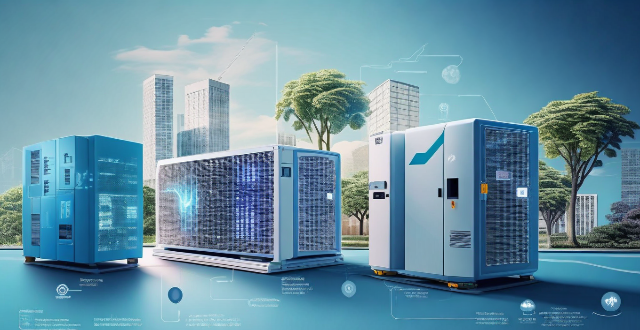
How can Smart Grid Technology help in managing renewable energy sources ?
Smart grid technology is crucial for managing renewable energy sources, enabling their integration into the existing power system and improving efficiency, reliability, and sustainability. It achieves this by optimizing energy consumption, managing demand response, predicting maintenance, self-healing capabilities, integrating energy storage, developing microgrids, real-time monitoring, and data analytics. As renewable energy grows in importance, smart grid technology will become increasingly vital in integrating these sources into our power systems.

In what ways can energy storage solutions improve grid stability and reliability ?
Energy storage solutions play a crucial role in enhancing grid stability and reliability. They contribute to balancing supply and demand, providing ancillary services, integrating renewables, improving resilience, optimizing economic efficiency, facilitating distributed generation, and supporting transmission and distribution systems. Energy storage systems can absorb excess energy during low demand periods and release it during peak times, helping to level the load on the grid. They also provide frequency regulation and voltage support, smoothing out the variability of renewable sources like wind and solar. Energy storage enhances resilience by providing blackstart capability and islanding, allowing parts of the grid to be isolated and continue supplying power in case of major faults. It optimizes economic efficiency by enabling arbitrage and deferring costly grid upgrades. Energy storage facilitates distributed generation by allowing consumers with distributed generation to store energy during off-peak hours and use it during peak time periods, reducing their electricity bills. Overall, energy storage solutions are becoming increasingly vital for modernizing and strengthening our electrical grids.

How do virtual power plants utilizing renewable energy affect grid stability and management ?
**The Impact of Virtual Power Plants Utilizing Renewable Energy on Grid Stability and Management** Virtual power plants (VPPs) aggregate various renewable energy resources to optimize electricity production and supply, enhancing grid stability and management. They balance supply and demand, reduce transmission losses, and enhance reliability by integrating distributed energy resources into a controllable network. VPPs offer operational flexibility, optimize resources, integrate electric vehicles, and facilitate energy trading. However, they also pose challenges such as complexity in management, interoperability issues, security concerns, and the need for regulatory adaptation. Overall, VPPs utilizing renewable energy sources have a profound effect on grid stability and management, offering enhanced reliability, efficiency, and flexibility, but require careful planning and adaptation to fully realize their potential.

What are the latest trends in smart grid technology to integrate renewable energy sources more effectively ?
The article discusses the latest trends in smart grid technology that are facilitating the integration of renewable energy sources into power systems. These trends include distributed energy resource management through microgrids and virtual power plants, advanced predictive analytics and machine learning for weather and load forecasting, various energy storage technologies like battery storage, pumped hydro storage, and flow batteries, smart infrastructure and automation involving smart meters and grid automation, electric vehicles participating in demand response programs and vehicle-to-grid technology, and blockchain applications for peer-to-peer trading and transactive energy systems. Collectively, these advancements aim to create a cleaner, more sustainable, and resilient energy system.

Is speed reading a natural ability or a skill that can be learned ?
Speed reading is a topic of interest for many individuals who wish to improve their reading efficiency and comprehension. The question arises whether speed reading is a natural ability that some people possess, or if it is a skill that can be learned and developed through practice and training. While there may be some individuals who possess a natural ability for speed reading, it is generally accepted that speed reading is a skill that can be learned and improved upon through practice and training. By employing specific techniques and strategies, anyone can enhance their reading speed and comprehension, ultimately increasing their productivity and knowledge acquisition.

What impact do energy storage solutions have on the economics of renewable energy ?
Energy storage solutions significantly impact renewable energy economics by addressing variability and unpredictability. They enhance grid stability, reduce costs, and increase efficiency, thus making renewable energy more viable. With ongoing technological advancements, energy storage will continue to play a crucial role in integrating renewable energy into power grids and achieving global decarbonization goals.
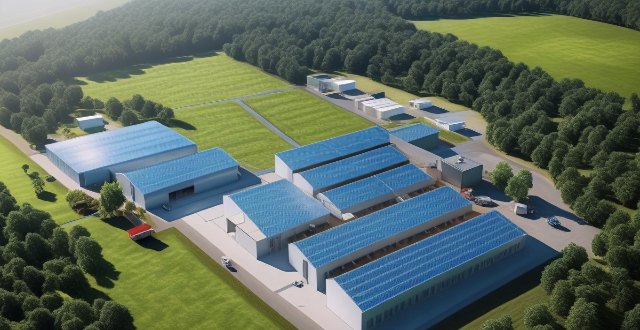
What are some examples of distributed energy systems ?
Distributed energy systems (DES) are small-scale power generation units located close to end-users, offering benefits like increased energy efficiency and reduced environmental impact. Examples include solar PV systems, wind turbines, fuel cells, and microgrids. These systems can operate independently or connect to the main power grid. Solar PV systems convert sunlight into electricity using silicon cells, while wind turbines harness wind's kinetic energy. Fuel cells generate electricity through a chemical reaction of hydrogen and oxygen. Microgrids are localized groups of interconnected loads and distributed energy resources that can operate independently from the main power grid. DES contribute to a more sustainable future by improving energy efficiency, reducing environmental impact, and enhancing electricity supply reliability.
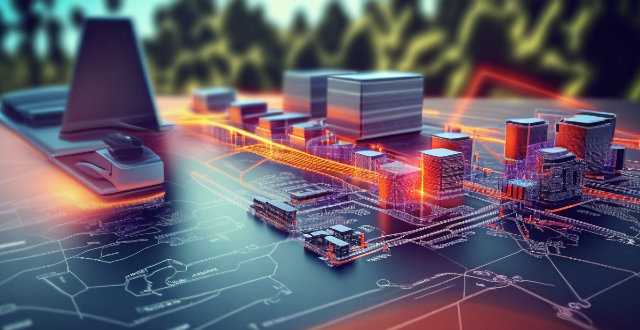
What are the benefits of Smart Grid Technology ?
Smart grid technology offers numerous benefits including improved reliability, enhanced efficiency, increased sustainability, greater transparency and control for consumers, and improved security.
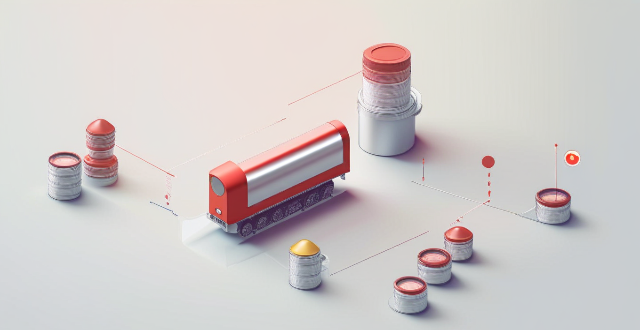
How can Smart Grid Technology reduce carbon emissions ?
Smart grid technology can reduce carbon emissions by improving energy efficiency, integrating renewable sources, enhancing system reliability, engaging consumers, and optimizing transmission and distribution.

What are the security concerns related to Smart Grid Technology ?
Smart grid technology, which uses digital communication technologies to monitor and control the flow of electricity, offers benefits such as increased efficiency and reliability. However, there are security concerns that need to be addressed, including cyber attacks, data breaches, insider threats, physical security risks, and interdependencies with other critical infrastructures. It is essential to implement strong cybersecurity measures, strict access controls, and robust physical security protocols to protect the system's integrity and confidentiality.
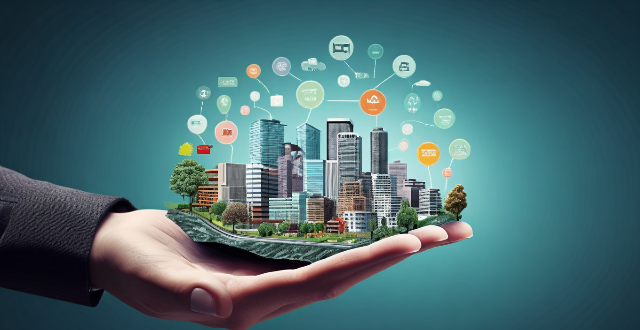
What are the economic implications of adopting Smart Grid Technology ?
Adopting Smart Grid Technology brings about several economic implications that can be beneficial for both consumers and utility companies. These implications include cost savings, increased reliability, job creation, improved energy efficiency, and investment opportunities.

What are the challenges faced in implementing Smart Grid Technology ?
The text discusses the challenges faced in implementing smart grid technology, which can be broadly classified into technical, economic, and social categories. Technical challenges include interoperability issues such as integration with existing infrastructure and lack of standardization, as well as cybersecurity concerns like data privacy and infrastructure vulnerability. Economic challenges involve high initial investment costs, limited government support, and difficulties in finding suitable financing options. Social challenges encompass public acceptance and awareness issues, trust concerns among consumers, legal and regulatory hurdles related to data privacy and energy policies, and policy uncertainty. Overcoming these challenges is essential for achieving a more efficient, reliable, and sustainable energy future.

How do energy storage systems contribute to sustainable development ?
Energy storage systems are crucial for sustainable development, improving renewable energy efficiency, enhancing grid stability, supporting the shift to electric vehicles, promoting decentralization and local production, mitigating environmental impact, and offering economic benefits. They help balance supply and demand, reduce waste, even out demand spikes, support EV infrastructure, enable microgrids, reduce fossil fuel dependency, increase energy efficiency, save costs, and create jobs. Energy storage systems are a key component in the transition to a low-carbon future.

How do distributed energy systems contribute to energy efficiency and sustainability ?
Distributed energy systems (DES) play a significant role in improving energy efficiency and sustainability. DES refers to a comprehensive energy utilization system located near the end-users, which can operate independently or in conjunction with the grid. It encompasses various technologies such as combined heat and power (CHP), renewable energy, energy storage, and fuel cells. Here is a detailed exploration of how distributed energy systems contribute to energy efficiency and sustainability: 1. **High Energy Efficiency** - **Combined Heat and Power (CHP)**: CHP systems generate both electricity and heat simultaneously, providing an overall efficiency of up to 80%-90%. This is considerably higher than traditional centralized power plants, which typically have an efficiency of around 40% for advanced coal-fired power plants. - **Energy Cascade Utilization**: Distributed energy systems utilize energy cascading, where the byproducts of one process are used as inputs for another. For example, waste heat from electricity generation is used for heating or cooling, maximizing energy utilization. - **Reduced Transmission Losses**: Due to their proximity to consumers, DES reduces the need for long-distance transmission of electricity, thereby minimizing transmission losses compared to centralized power systems. 2. **Environmental Protection** - **Low Emissions**: Distributed energy systems often use clean energy sources like natural gas, solar, and wind, which have lower emissions compared to traditional coal or oil combustion. - **Renewable Energy Integration**: Distributed energy systems can easily integrate renewable energy sources like solar panels and wind turbines, promoting the use of sustainable energy. - **Waste Reduction**: By using waste heat and integrating multiple forms of energy production, DES helps reduce energy waste and its associated environmental impact. 3. **Economic Benefits** - **Cost Savings**: Distributed energy systems can reduce energy costs by decreasing transmission and distribution expenses. They also provide more stable energy prices compared to fluctuating grid rates. - **Infrastructure Investment Reduction**: Since DES requires less infrastructure compared to large-scale power plants and transmission networks, it can lead to significant cost savings in infrastructure investment. - **Market Potential**: The development of DES has opened up new markets and business opportunities, especially in the sale and maintenance of distributed energy equipment. 4. **Enhanced Reliability and Resilience** - **Decentralized Architecture**: The decentralized nature of DES means that if one system fails, others can still operate, ensuring continuous energy supply. - **Storm and Disaster Resilience**: During large-scale disasters or extreme weather events, DES can serve as a crucial energy source when centralized power systems fail. 5. **Promotion of Smart Grid Development** - **Integration with Smart Grids**: Distributed energy systems can be integrated with smart grids, enabling two-way flows of electricity and information, which enhances overall grid efficiency and responsiveness. - **Demand Response Management**: DES allows for better demand response management, where consumption can be adjusted based on real-time supply and demand conditions, further enhancing energy efficiency. Additionally, there are several challenges and considerations for the widespread adoption of distributed energy systems: - **Technical Challenges**: The integration of multiple energy sources requires advanced technical expertise and sophisticated control systems. - **Policy Support**: While policies increasingly support DES, more comprehensive regulations and incentives are needed to encourage wider adoption. - **Economic Viability**: Although DES offers economic benefits, the initial investment can be high, which may limit access for some users. In summary, distributed energy systems contribute significantly to energy efficiency and sustainability through high energy utilization efficiency, environmental protection, economic benefits, enhanced reliability and resilience, and promotion of smart grid development. Despite certain challenges, the advantages of DES make it a critical component of future energy strategies.

How do smart grids help in achieving better energy efficiency ?
Smart grids, through their advanced digital communication technology, play a pivotal role in enhancing energy efficiency. They achieve this by optimizing power generation and distribution, managing energy consumption effectively, improving system reliability, encouraging sustainable practices, and leveraging data analytics. Features like demand response, distributed generation, smart meters, load balancing, peak shaving, self-healing capabilities, predictive maintenance, dynamic pricing, and electric vehicle integration contribute to these efficiency improvements. As we move towards a more connected future, smart grids will continue to drive efforts towards a more energy-efficient global landscape.
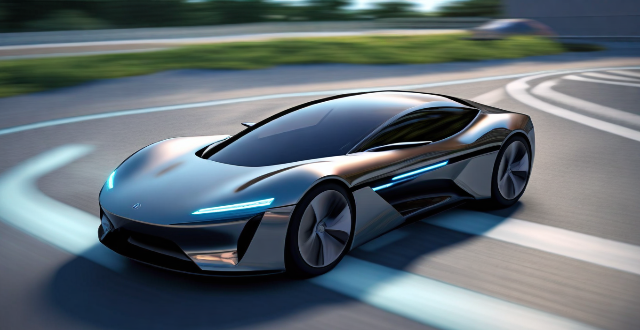
What is the future outlook for electric vehicle adoption globally ?
The future outlook for electric vehicle adoption globally is promising, driven by government policies, technological advancements, and changing consumer attitudes towards sustainability. Governments are offering tax credits, setting emission standards, and investing in charging infrastructure to encourage EV adoption. Technological advancements such as improved battery technology, autonomous driving, and smart grid integration are also driving adoption. Consumer attitudes towards sustainability and environmental concerns are contributing to the growth of EV adoption. However, challenges and barriers such as high upfront costs, lack of charging infrastructure, and range anxiety must be addressed to achieve widespread adoption.
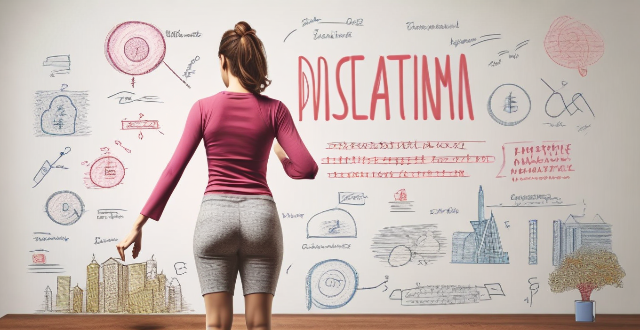
Can stress impact a woman's ability to conceive ?
The text discusses the potential impact of stress on a woman's ability to conceive, detailing how stress can lead to hormonal imbalances that affect menstrual cycles and ovulation, decreased sex drive, impaired egg quality, and difficulty maintaining pregnancy. It also provides coping strategies such as mind-body techniques, exercise, building a support system, and making lifestyle changes to manage stress levels and potentially improve fertility.

Can certain foods or dietary habits influence our ability to concentrate ?
The influence of certain foods and dietary habits on our ability to concentrate is significant. Consuming caffeine in moderation can enhance alertness, while staying hydrated is crucial for cognitive performance. Protein helps balance blood sugar levels, healthy fats support brain health, and avoiding high sugar intake prevents energy crashes. Iron, vitamins B6, and B12 are essential for cognitive function. By choosing nutrient-dense foods and adopting healthy dietary habits, we can support optimal cognitive function.

Can participation in sports enhance one's ability to express themselves artistically ?
Participating in sports can enhance one's artistic expression by improving physical abilities, increasing creativity, developing discipline and perseverance, and building emotional intelligence. These skills can be applied to various forms of art such as dance, theater, music, and visual arts. While it may not be necessary to participate in sports to become an artist, doing so can provide valuable experiences that can benefit anyone looking to express themselves creatively.
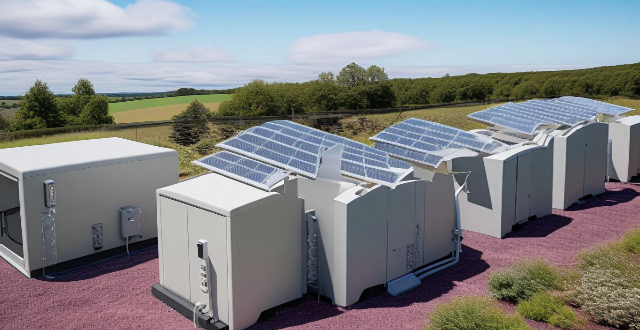
How does a distributed energy system work ?
A distributed energy system (DES) is a decentralized approach to power generation and distribution that utilizes renewable energy sources, energy storage devices, and smart grid technologies. The system works by generating electricity locally from renewable sources, storing excess energy for later use, and distributing power efficiently within a local area. This setup enhances efficiency, reliability, and sustainability while potentially reducing costs. DESs offer flexibility and adaptability to changing energy needs and technological advancements, positioning them as a crucial element in the future of energy infrastructure.

How does smoking affect a woman's ability to get pregnant ?
Smoking can severely impact a woman's fertility by reducing ovulation, damaging eggs and sperm, causing hormonal imbalances, decreasing endometrial receptivity, and increasing the risk of ectopic pregnancy. Quitting smoking is crucial for improving fertility and ensuring a healthy pregnancy. Seeking professional help, making lifestyle changes, and educating oneself about the harmful effects of smoking on fertility are recommended steps towards achieving a successful pregnancy.

How does age impact the ability to learn and improve sports skills ?
Age impacts learning and improving sports skills due to physical, cognitive, and psychological changes. Physical changes include decline in muscle mass and strength, decreased cardiovascular fitness, and joint pain and stiffness. Cognitive changes involve slower reaction times, decreased motor coordination, and memory loss. Psychological changes include fear of injury and lack of motivation. By adapting training accordingly, older athletes can continue to improve their sports skills and enjoy participating in sports throughout their lives.

How do electronic devices impact our ability to fall asleep ?
Electronic devices, such as smartphones and laptops, have become an integral part of modern life but their use has raised concerns about their impact on sleep quality and quantity. Exposure to blue light from electronic screens before bedtime can delay the onset of sleep by suppressing the production of melatonin, a hormone responsible for regulating sleep-wake cycles. This means that using electronic devices in the hours leading up to bedtime can make it harder for us to fall asleep. In addition, engaging with stimulating content on electronic devices can lead to mental arousal, making it difficult for us to relax and fall asleep. To reduce the impact of electronic devices on sleep, consider implementing tips such as establishing a relaxing bedtime routine, limiting screen time before bed, creating a technology-free sleep environment, and engaging in mindfulness practices.